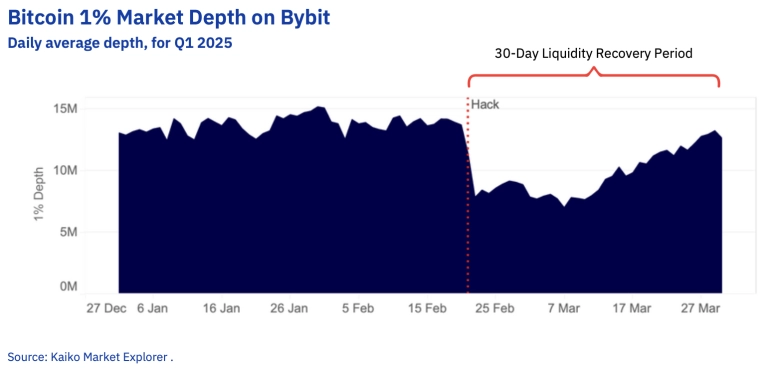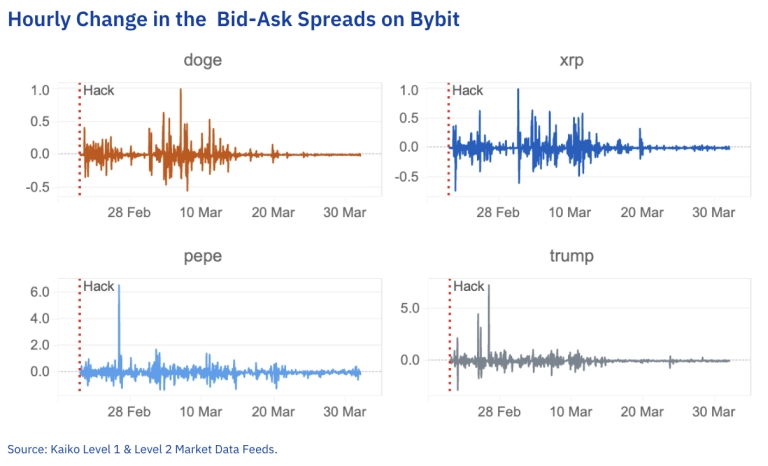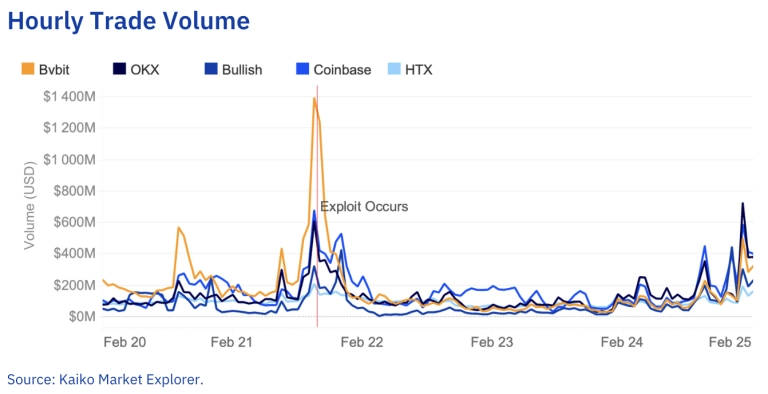Bybit rebounds strongly: Kaiko verifies its rapid recovery of liquidity after $1.5 billion hack
Dubai, UAE, May 7, 2025 - In the aftermath of the largest hack in cryptocurrency history, Bybit has demonstrated a model of market resilience, transparency, and user trust. An independent report published by Kaiko, a leading provider of institutional-grade crypto market data, shows that Bybit restored liquidity to pre-incident levels in just 30 days - an industry first after a similar crisis.
On February 21, 2025, Bybit suffered an organized cyberattack, resulting in the withdrawal of unauthorized assets worth $1.5 billion. Although this incident shook the global crypto ecosystem, Bybit responded quickly and relied on its robust infrastructure to ensure uninterrupted trading. In the following weeks, the platform's liquidity, trading depth, and user confidence recovered at an astonishing speed.
Rapid recovery within 30 days, thanks to market structure innovation

According to Kaiko’s analysis, Bybit Bitcoin liquidity, measured by 1% market depth, recovered to an average of $13 million per day by the end of the first quarter of 2025, fully returning to pre-hack levels. Liquidity has been restored at all levels of the order book, ranging from 0.1% to 8% above or below the mid-price, showing deep participation from institutional market makers.
One of the keys to this recovery was the "Retail Price Improvement" (RPI) order that Bybit launched on February 20, the day before the incident. This feature is only available to retail traders who place orders manually through the Bybit website or app, and is not open to API access. RPI orders are submitted by institutional market makers and are designed to optimize transaction prices for retail traders. During the market volatility period after the incident, RPI orders effectively stabilized the trading environment, tightened spreads, and protected manual users from high-frequency algorithmic trading.
Altcoin markets recover synchronously, with spreads narrowing across the board

The recovery of liquidity is not limited to Bitcoin. As of March, more than 80% of the market depth of the top 30 major altcoins by market capitalization has recovered to pre-event levels. The spreads of major tokens, including high-volatility assets such as DOGE and XRP, have tightened significantly, reflecting the decline in execution costs and the recovery of market confidence in market making.
The volatility of the bid-ask spread - a key measure of market stress - continued to decline in March, indicating improved order book stability and stronger participation from liquidity providers.
Trading volume recovers faster than previous market crises

Despite macroeconomic uncertainty that has made overall market sentiment cautious, Bybit’s trading volume has recovered faster than previous similar events, such as the Bitfinex hack in 2016 or the SEC case of Binance.US in 2023.
Kaiko data shows that after the incident, Bybit's hourly trading volume once soared to $1.2 billion. Although the trading volume then fell briefly over the weekend, it has since recovered steadily, highlighting user stickiness and continued trust in Bybit's market resilience.
Gaining trust through transparency
The Kaiko report points out that Bybit’s high transparency in the crisis recovery process is one of the important reasons for its outstanding performance. Compared with other platforms where liquidity was damaged for a long time in similar incidents, Bybit quickly rebuilt market confidence and trading stability through open communication and timely market mechanism optimization.
As the crypto market matures, the competitiveness of exchanges is not only reflected in their performance during market booms, but more importantly, their ability to respond to crises. Bybit’s rapid rebound in liquidity and continuous innovation centered on users have set a new benchmark for resilience in the industry.



